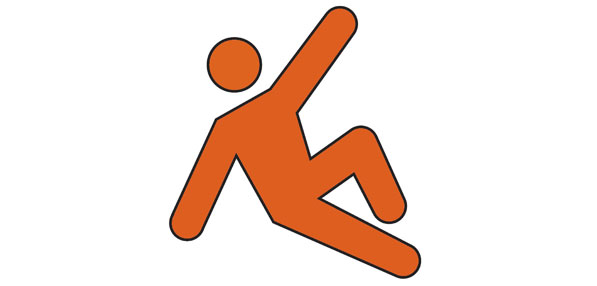Accreditation 2015: Are you prepared for questions about falls?
Learn 4 simple steps to help you prepare for site visits happening at Coastal acute sites between June 22-26, 2015.
In the next few months we’ll be interviewing the experts and highlighting some key Required Organizational Practices (ROPs) here in VCH News to help you prepare.
This week we talked to Tanya Dunne, MHA, RPT, Regional Program Leader, Fall & Injury Prevention Program to learn more about VCH’s Falls ROP. “Falls are the number one adverse event reported in the Patient Safety Learning System (SLS),” said Tanya. “They have serious consequences for our patients including injury, increased length of stay, and even death. “
Are you ready to answer questions about falls prevention
Surveyors might ask:
- What’s your role in preventing falls?
- How do you identify people at risk?
- How do you share your falls care plan?
- What changes has your unit put in place as a result of discussing falls in your area?
How can the Falls ROP help?
ROPs are the essential practices that keep our patients safe and the tool surveyors use to evaluate our compliance. The more you know about how your unit is meeting the ROP, the more prepared you’ll be for the surveyors questions.
Our 4-step Fall Prevention strategy
“The key to preventing them is to understand why people fall and then to put a strategy in place to prevent them.” Tanya outlines some of the key features of VCH’s Regional Fall Prevention Strategy below. Read the Falls ROP for full details.
1. Have a falls prevention strategy
Our strategy is Assess, Plan and Evaluate using our Clinical Practice Guidelines and the Regional Falls Prevention resources and tool kit.
2. Identify people at risk
“Remember to see beyond a person’s age and look for both environmental and physiological factors such as weakness, dizziness or medications, ” said Tanya. We use CAMP-V, the standard screening tool for acute care, with the exception of the emergency room at LGH that uses the Morse Falls Scale. The elements of CAMP-V are:
- Cognition
- Altered Elimination
- Mobility
- Previous Fall in the last 90 days
- Vision
3. Develop individual care plans for populations at risk
“In the past few years we’ve improved communication around falls through standardized care plans across VCH. We’ve also improved ongoing communication about fall risk status through our fall risk alerts and daily charting on Patient Care Flow Sheets and through reporting at shift change, ” said Tanya
4. Regularly evaluate and make improvements to the strategy
All falls are recorded in the SLS, displayed on quality improvement boards and are regularly discussed by teams to identify areas for improvement.
“We’ve made a lot of improvements in this area since the last round of Accreditation with the introduction of the Falls Improvement Lane and through programs like Releasing Time to Care on many units.”
Read the full ROP fact sheet
We’ve created Fact Sheets for a number of priority ROPs including Falls that include a checklist of what compliance around each of the elements above looks like as well as links to Practice Guidelines, toolkits and sample questions from surveyors. Get the Falls Fact Sheet on VCH-Connect.
Spread the word
Share this story and the Falls ROP with your team by email and by posting it in your lunchroom.
More stories in this series: Preventing pressure ulcers the key to one Coastal ROP
Have questions about fall prevention?
Contact: Tanya Dunne, MHA, RPT
Regional Program Leader
Fall & Injury Prevention Program
Email: Tanya.Dunne@vch.ca
Have questions about Coastal Accreditation 2015?
Contact: Jody Sydor Jones
Coastal Director, Clinical Quality and Patient Safety
Email: Jody.SydorJones@vch.ca
Visit the Accreditation site on VCH-Connect

